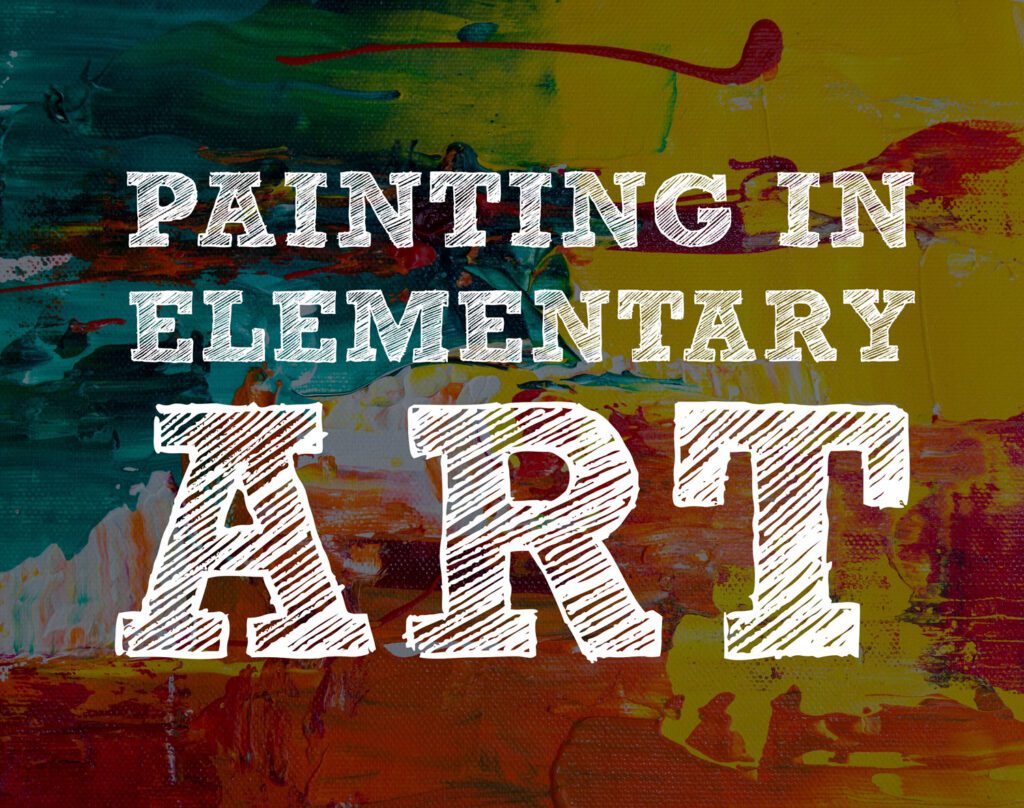
Learning how to paint in elementary art is a fun and important experience for young artists. It can be messy and chaotic, but with proper planning and organization, it will be enjoyable for everyone (including you!). Here are some tips for teaching painting projects for elementary art classes in K-5th grade.
SETTING UP A DEMO TABLE
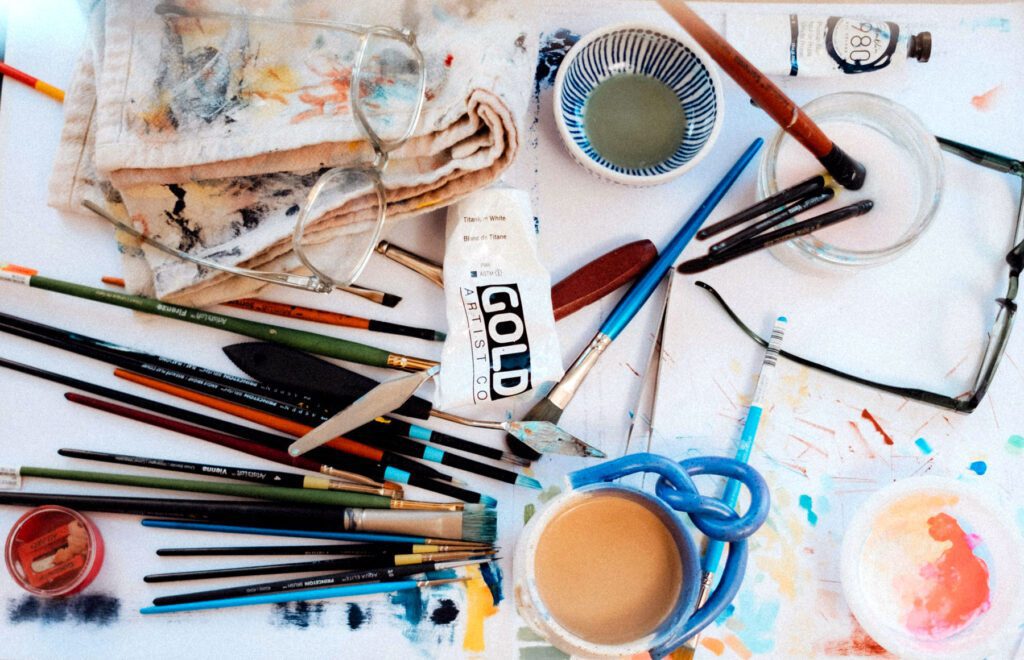
Before starting a painting unit, set up a demo table. Demonstrating techniques in person helps walk students through the steps. Since there are various learner types, it’s crucial to cater to all by including written steps in a presentation, displaying to-do items during class, demonstrating in person, and providing project guides on tables.
Your demo table should be a dedicated space, this isn’t your desk (which should be set aside for collecting projects, grading, and working on your computer). Position it in the center front of the classroom where students can easily see your work. Using a camera to project your tabletop onto a screen is even better. Show the steps you want students to complete that day. PRO TIP: Record the steps to show to other classes, so you don’t have to repeat the same demo.
UTILIZING PROJECT GUIDES
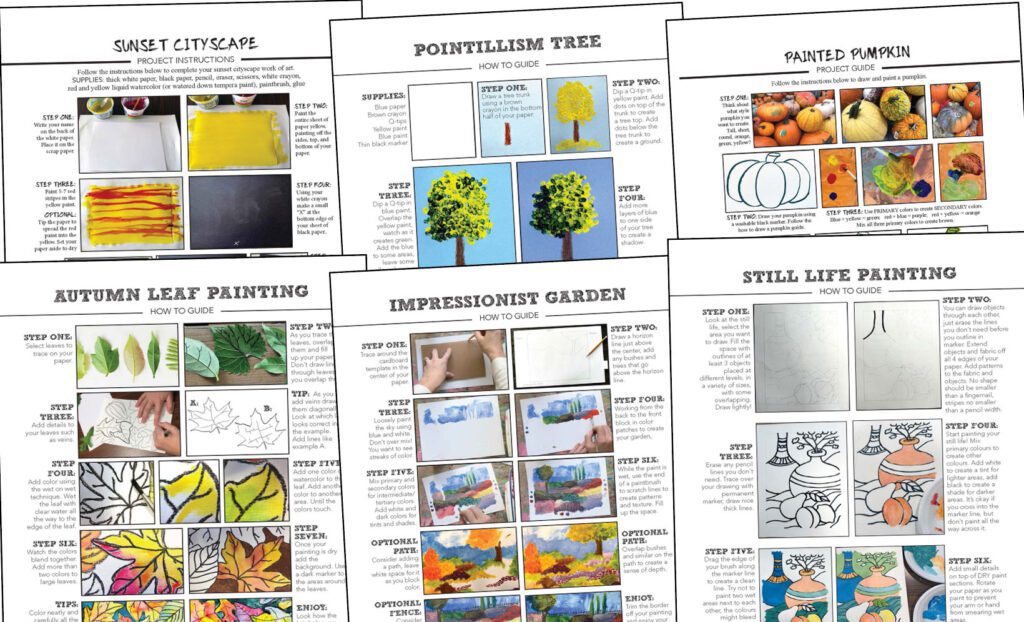
In addition to an in-person demo, place project guides on every table. These guides show visuals and text of each step, aiding students who excel at reading and understanding instructions. Print one copy per table and laminate them for durability and reuse.
SCAFFOLDING TECHNIQUES
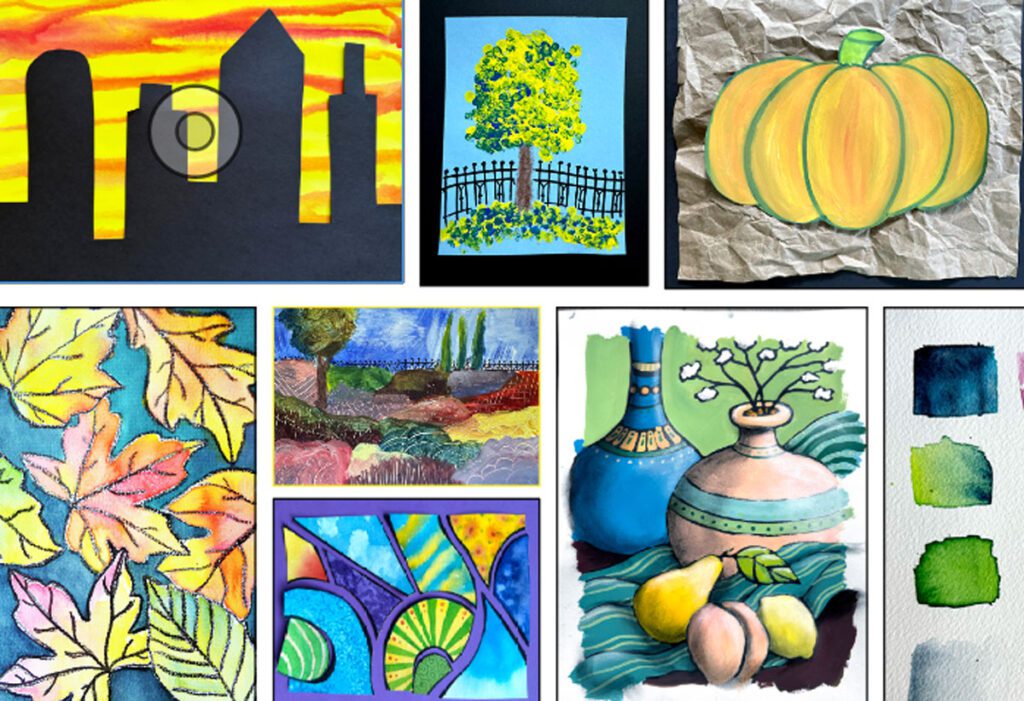
One of the most important aspects of teaching is scaffolding concepts. Start with the basics in kindergarten and build on them as students progress through grade levels. Here’s a breakdown of a typical painting unit that shows how techniques scaffold:
Kindergarten: Cover basic color mixing, color theory, and value. Start with simple projects like painting a tree, using blue and yellow to create green, and demonstrating shadows and highlights. Pro Tip: Use Q-tips instead of brushes for quick clean-up.
1st Grade: Focus on painting techniques early in the year with fall projects. Review color theory and value through painting pumpkins, discussing the variety of pumpkin colors, and mixing colors to reflect them. Review basic color mixing and value, and introduce texture by adding smooth or bumpy textures to their pumpkins.
2nd Grade: Continue the fall theme with autumn leaf paintings. Review color theory, value, and texture. Introduce watercolor techniques, discuss warm vs. cool colors, and creating depth through color and overlapping.
3rd Grade: Incorporate art history with an Impressionist painting project. Build on previous knowledge of color theory by using only tertiary colors. Build on their understanding of depth and overlapping by creating backgrounds, middle grounds, and foregrounds. Discuss texture and pattern to mimic the Impressionist style.
4th Grade: Dive into higher-level thinking with an abstract watercolor design project. Combine lines and shapes to create an abstract pattern, test various watercolor techniques, and create a relief sculpture. Build off of understanding of depth by turning 2D work into 3D work.
5th Grade: Everything students learned in K-4th comes together in a traditional still life painting project. Focus on depth, overlapping, composition, drawing from life, color theory, and value. Use black and white charcoal to create value and make paintings pop.
ORGANIZING ARTWORK
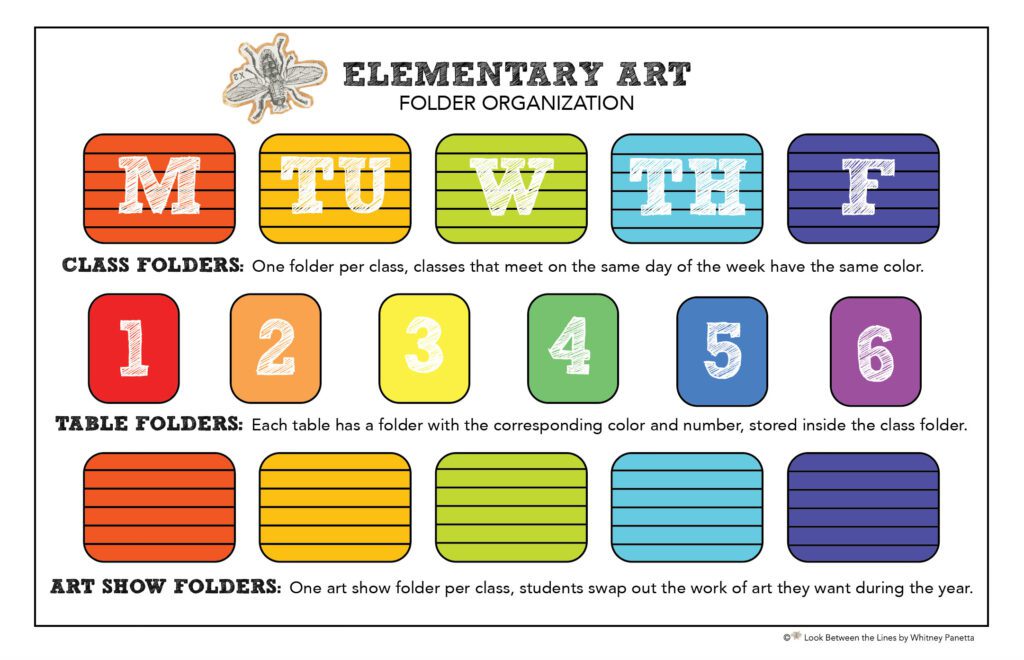
With multiple classes working on painting projects, your drying rack will get crowded. Organization is crucial to keep your sanity and prevent artwork from getting lost.
When starting a new project, have students write their name and class on the back. Watch every student do this together. Use a system for organizing work by class and day. Assign each table, grade level, and day of the week a color. Create folders for the table and day. For example, all artwork from Green Table 1 goes into the Red Kindergarten folder and the Pink Wednesday folder. Keep day-of-the-week folders easily accessible.
When students are painting, have them place their work on the drying rack or a table to dry. If space is tight, collect artwork and put it in the appropriate folders as they dry. If space allows, let a full day of paintings dry and collect them first thing in the morning.
MINIMIZING MOVEMENT
For students new to painting, create a painting table where they can bring their art to add paint while working on their drawing base at their table. Call one table at a time to the painting table, and have others work on early finisher activities. This is especially helpful for lower levels needing more one-on-one help and oversight.
OVERVIEW OF PAINTING PROJECTS FOR ELEMENTARY ART
Hit the easy button and get this painting curriculum for elementary art that goes in-depth with the following projects here.
Kindergarten Tree Painting
- Objective: Learn basic color mixing and shadow creation.
- Supplies: Blue and yellow paint, Q-tips.
- Instructions: Mix blue and yellow to create green for the tree. Use blue and yellow for shadows and highlights.
1st Grade Pumpkin Project
- Objective: Understand color mixing, value, and texture.
- Supplies: Various colored paints, brushes.
- Instructions: Paint pumpkins in various colors, discuss form through line and value, and add textures.
2nd Grade Autumn Leaves
- Objective: Introduce watercolor techniques, review warm vs. cool colors, and depth creation.
- Supplies: Watercolors, brushes, real leaves for tracing.
- Instructions: Trace leaves, use wet-on-wet technique, and explore color overlapping.
3rd Grade Impressionist Painting
- Objective: Explore tertiary colors, value, depth, and pattern.
- Supplies: Primary colors, brushes, paper, toothpicks.
- Instructions: Create backgrounds, middle grounds, and foregrounds, mimic Impressionist style with texture.
4th Grade Abstract Watercolor Design
- Objective: Combine lines and shapes to create patterns, understand abstract art, test watercolor techniques.
- Supplies: Watercolors, brushes, Sharpies, scissors for relief sculpture.
- Instructions: Create abstract patterns, test various techniques, cut and assemble relief sculpture.
5th Grade Still Life Painting
- Objective: Combine all learned techniques, focus on color mixing, value and composition.
- Supplies: Paint, paper, Sharpies, black and white charcoal.
- Instructions: Draw from life, add paint, use charcoal to create depth and value.
By following these tips and project ideas, you can introduce painting projects for elementary art and feel confident teaching them in your classroom. Heading back to school? Check out tips for starting the first day in elementary art here.
Don’t forget to follow me on Instagram and TikTok for weekly visual journal demos and other project ideas. Subscribe here to get freebies, project tutorials, and more straight to your inbox. Until next time!

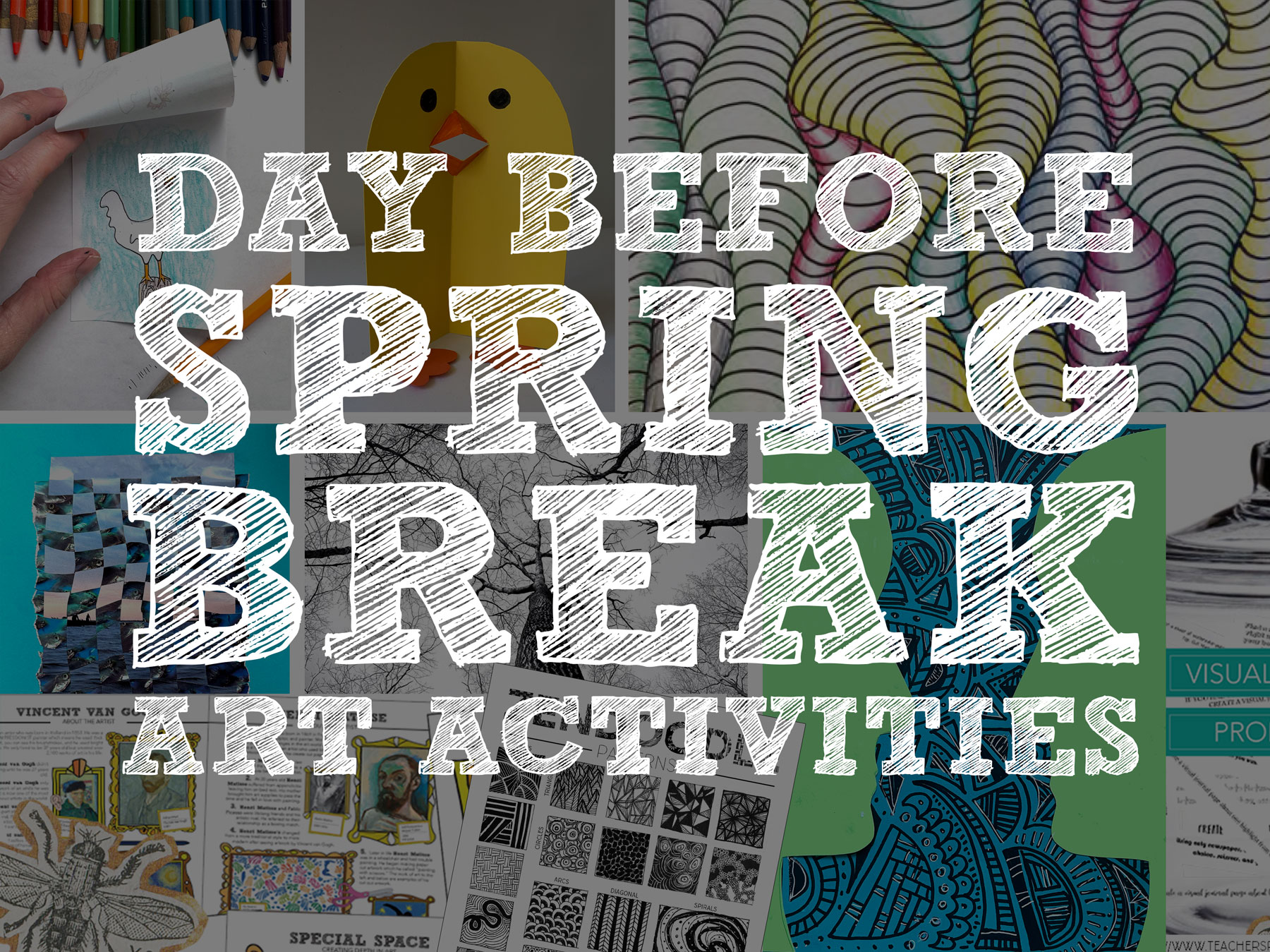

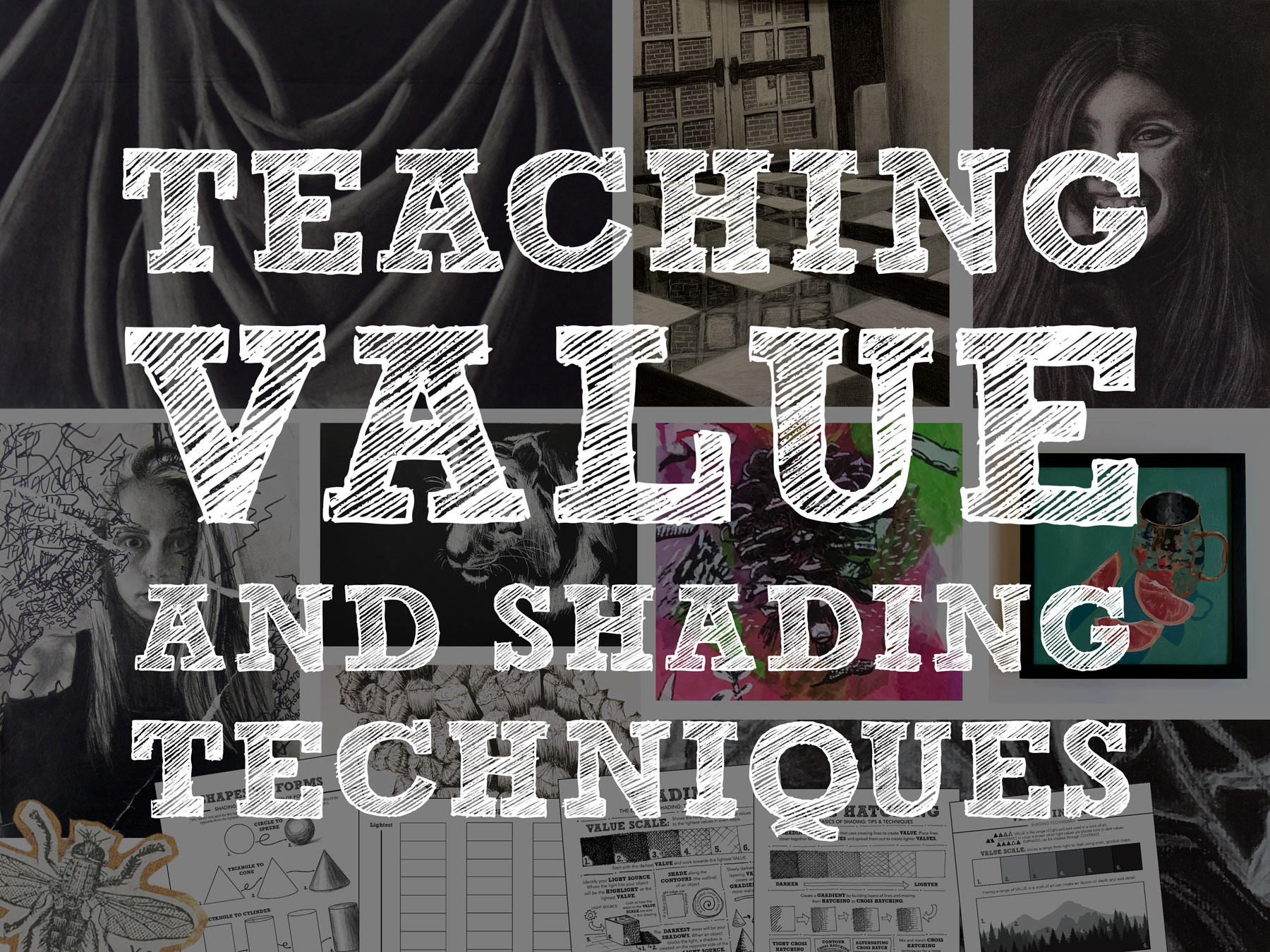


Leave a Reply